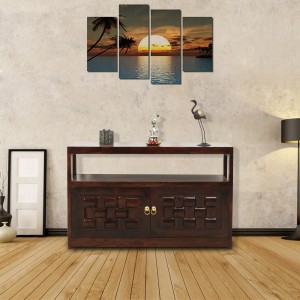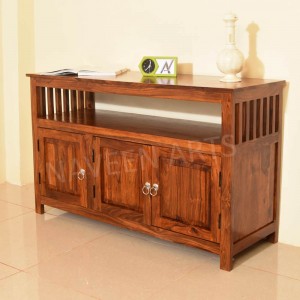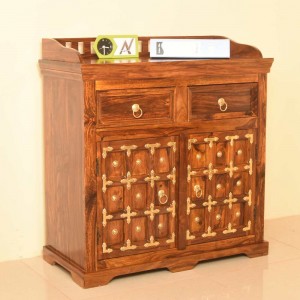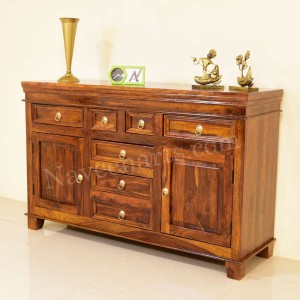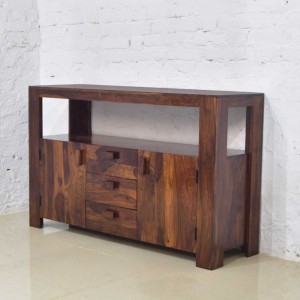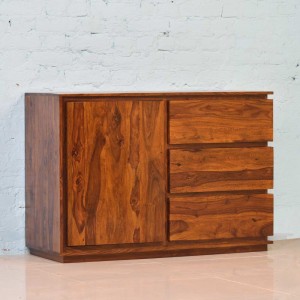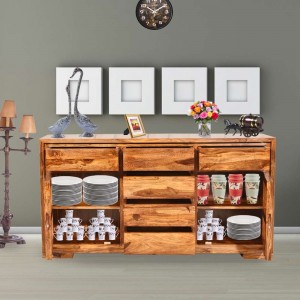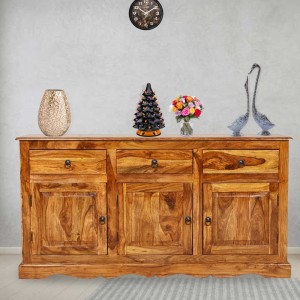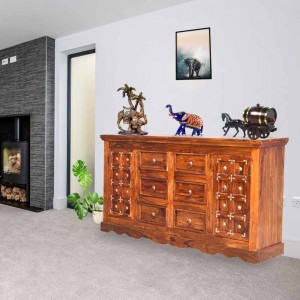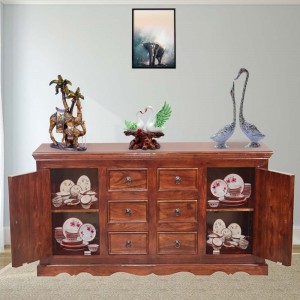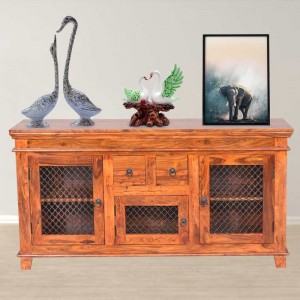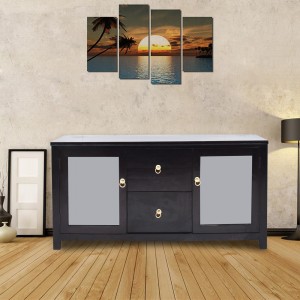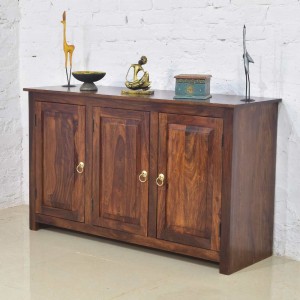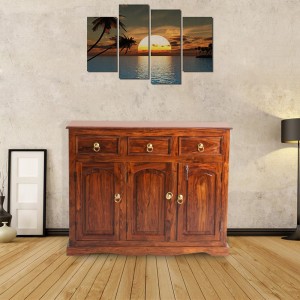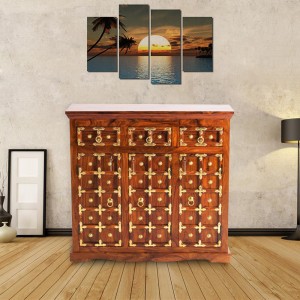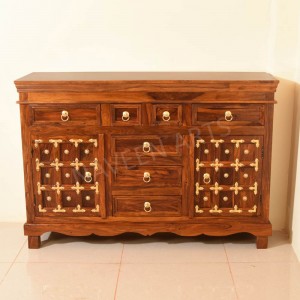Sideboard
-
Buffet Sideboard Wth Storage and Freestanding Kitchen Sideboard
Regular Price: ₹29,999.00
Special Price ₹27,999.00
Solid Wood Sheehsam Siramika Sideboard Three Drawers
Regular Price: ₹39,999.00
Special Price ₹29,999.00
A sideboard, also known as a buffet or a credenza, is a versatile piece of furniture commonly used in dining areas or living rooms. It provides storage space and a surface for displaying or serving items.
Here are some key features and considerations when selecting a sideboard:
Size and Dimensions: Measure the available space in the room where you plan to place the sideboard. Consider the width, height, and depth of the piece to ensure it fits well and allows for comfortable movement around it. Take into account any existing furniture or architectural features in the room.
Storage Capacity: Assess your storage needs and choose a sideboard that offers sufficient space for your belongings. Sideboards typically have a combination of drawers, cabinets, shelves, or open compartments. Consider the number of drawers and shelves, as well as their size and configuration, to accommodate your specific items.
Style and Design: Select a sideboard that complements the overall style and decor of the room. Sideboards come in various designs, ranging from traditional to modern or contemporary. Pay attention to the materials, finishes, and decorative elements, such as handles, knobs, or carved details, to ensure they align with your desired aesthetic.
Material and Construction: Consider the material and construction quality of the sideboard. Common materials include wood, metal, or a combination of both. Solid wood sideboards are often valued for their durability and natural beauty. Ensure the construction is sturdy and well-made, with reliable joints and hardware.
Functionality: Think about the specific functionalities you desire from the sideboard. Some sideboards have built-in features like wine racks, glassware holders, or adjustable shelves. Others may include a built-in hutch or display area for showcasing decorative items.
Surface Area: The top surface of the sideboard can serve as a display area or additional serving space. Consider the size and finish of the surface, as well as its suitability for your intended use. Some sideboards have extendable tops or pull-out trays to provide extra surface area when needed.
Budget: Determine your budget and look for sideboards within your price range. Prices can vary depending on factors such as material, size, brand, and craftsmanship. Set a budget that aligns with your needs and preferences.
A sideboard can be a functional and stylish addition to your dining area or living room, providing storage, display, and serving capabilities. By considering the size, storage capacity, style, and functionality of the sideboard, you can find a piece that not only meets your practical needs but also enhances the overall aesthetic of your space.



